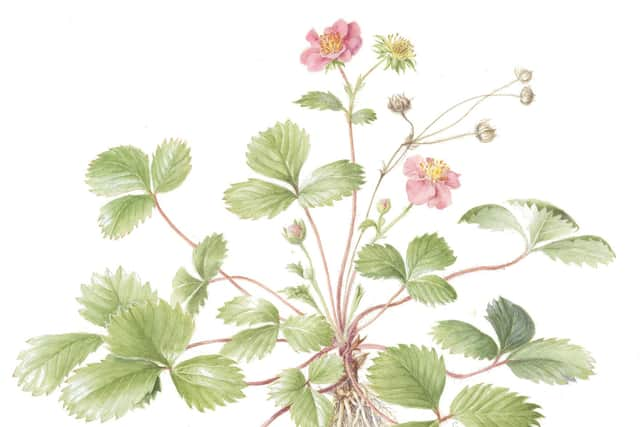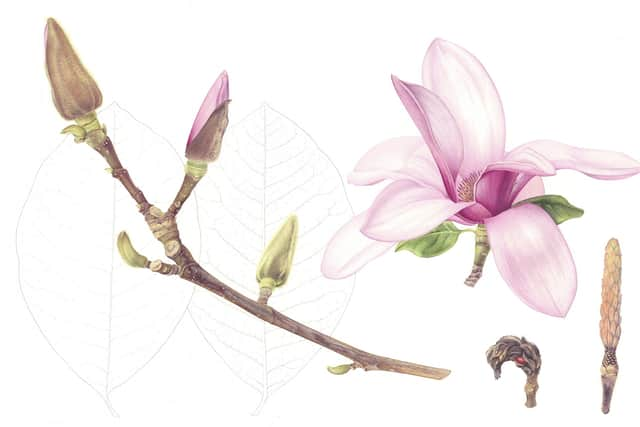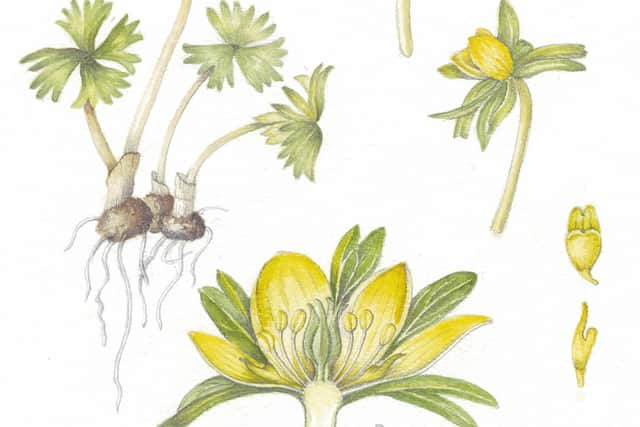Who are the Sheffield Florilegium Society? We meet the group of Sheffield artists leaving a legacy for future generations
Gardens can be a work of art. Each season portrays a varied colour palette, the dull hues of winter making way for a spectacular kaleidoscope of colour in the spring and summer months. The natural process of blooming and dying back in any garden brings enjoyment for a limited duration, so perhaps it was for posterity and preservation that collecting and recording the characteristics of exotic plants in particular began in university botanic gardens and the pleasure gardens of wealthy owners.
Early botanists, among them gardeners, painted and documented the species growing in their stately surroundings as Valerie Oxley, chairman of The Florilegium Society at Sheffield Botanical Gardens, explains. A Florilegium, or collection of flowers, usually takes the form of an illustration accompanied by a plant profile. The earliest collections were made for medicinal purposes and contained descriptions of plants and their medicinal properties. The books were known as herbals.
Advertisement
Hide AdAdvertisement
Hide AdValerie says the later florilegia of cultivated plants contained illustrations of plants grown for interest and beauty rather than for their medicinal properties as previously. New printing methods were available to artists enabling the option of engraving or etching in reproduction. The books were often divided into the four seasons. Among the many notable contributors was Alexander Marshall, an English gardener and botanical artist who compiled a florilegium featuring more than160 folios of plant drawings. The collection was presented to George IV in the 1820s. Interestingly, it is the only 17th century florilegium to survive to the present day.


In a similar way, Valerie and her fellow members of The Florilegium Society are carrying on the work that went on before through their painted records of plant life within Sheffield Botanical Gardens.
Valerie’s interest in nature and plant life stems from growing up on the edge of Northampton where, she recalls, from an early age collecting and pressing wild flowers, identifying them with the help of the Wild Flower Guide by R.S.R Fitter and the Observer’s Book of Wild Flowers by W J Stokoe.
“Life in the 1950s was fun, there was so much to discover in the natural world, so much to find, to collect and to treasure,” recalls Valerie who remembers drawing with her sisters, and pressing and preserving flowers between the pages of an old book, carried specifically for the purpose of family excursions for flowers spotted from the car window, or placed between newspapers and put under the carpet when they returned home.
Advertisement
Hide AdAdvertisement
Hide AdCarrying her childhood interest into adulthood, she began sharing it with others tutoring classes in botanical illustrations at the University of Sheffield. The classes began in 1989 with weekly meetings for beginners and developed into a Diploma in Botanical Illustration. In 1993 The Northern Society for Botanical Art was founded in the city in response to providing a place for people with a shared enjoyment of the subject to continue learning and exhibit their botanical artwork.


“I founded the Florilegium Society at the suggestion of botanical artist and teacher, Anne Marie Evans, who founded the Chelsea Physic Garden Florilegium Society in London. Brooklyn Garden, New York formed a Florilegium Society at the same time as Sheffield. We are affiliated to both,” says Valerie, who has written two books, Botanical Illustration and A Florilegium Sheffield’s Hidden Garden, which was published by Crowood Press in 2021.
“A Florilegium is not just a collection of meticulously drawn and painted plant illustrations, it is a lesson in history, a scientific treatise. It introduces us to a map of the world, encounters with Kings and Princes, intrepid plant collectors, botanists, gardeners, medics and monks!”
The Society, of 40 members, was established in 2002 to create an historical archive of drawings of plants in the gardens which will be a lasting gift to the people of Sheffield. Submissions to the Archive go through a selection panel which meets once a year. Botanical Illustrator and panel member, Eleni McLoughlin, is the Society’s Archivist.
Advertisement
Hide AdAdvertisement
Hide AdBorn in Nicosia, Cyprus, where her love of the natural environment was encouraged at primary school, Eleni’s involvement with the Society developed from her studies in botanical illustration at The University of Sheffield. As well as her work with the Sheffield Florilegium Society, Eleni also produces botanical illustrations on Cyprus endemic flora for the visitor centres and illustrations for several books, notably The Red Data Book of the Flora of Cyprus. As Archivist for the Florilegium Society, sheensures the illustrations comply with guidelines and include the key diagnostic features of the plant.


The specimens, one to dry and preserve for their Herbarium and one to work from to produce the illustrations, are given to them by an authorised member of the Friends of Sheffield Botanical Gardens. Illustrations, which can take more than 60 hours to complete, are produced on acid free paper and submitted for selection by a panel of four, all knowledgeable artists or horticulturalists. “The final illustrations are professionally mounted using acid free mount boards and placed in archival storage boxes,” explains Eleni. There are currently 151 illustrations in the collection at Sheffield City Archives. Viewing is by appointment. “Drawing a flower, anything that is very special about it, the colour, everything has to be there,” says Eleni, who preserves some of her own specimens in alcohol for future reference. “It is a big project and it is really wonderful. People will be able to see them from all over the world.” Botanical artist and Society member, Sheila Stancill, explains the process of painting a specimen for the collection. “There are a lot of different styles. We have guidelines to tell us what we should show, the dissections, the details of flowers and buds and it is intricate but also fascinating.”
Fellow Society member and botanical artist, Sally Strawson, who has contributed to The Highgrove Florilegium, recording the plants growing around King Charles’ Highgrove home, and The Transylvanian Florilegium and The Sydney Botanical Gardens Florilegium says: “The world is a very instant place now, everything is available at the touch of a button, but contemplating, observing, recording and ultimately creating a painting of your subject is intensely rewarding. I think all artists who paint for all the Florilegia have an absolute passion for creating something both illuminating and beautiful that can be kept for posterity. A great deal of time, effort and patience is required to produce each piece, and we do it because we love it.”
Louise Lane, the Society’s Treasurer, has won three RHS Gold Medals for different exhibitions, including one for drawings of native ferns in the Peak District where she grew up. “Drawing the plants in the gardens is about producing a body of work for future generations, a pictorial depiction of the plants that are growing there. A photograph captures a moment in time, but with the illustrations you can depict the plant through all its life cycles through the year. Plants are under threat, they are ephemeral things, they are changing and evolving all the time. They change through the seasons, some get diseases and die. However, we can record where botany is at this point in time, in 2023. In 100 years’ time the Botanical Gardens may not be the same. Climate change may have affected what we are able to grow there, but these drawings and paintings will still be visible and people will be able to look back and say this plant grew and thrived there 100 years ago.”
www.florilegiumsheffield.org.uk